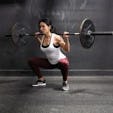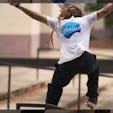By now, you’ve probably heard enough conflicting opinions about ab training to give you a stomach ache. These range from, “You have to do 100 crunches a day,” to “ab work isn’t necessary at all; you can see the muscles by simply dieting off the fat that covers them.” You’ve been told you should treat your midsection like two different muscles, doing “upper-ab exercises,” and then a different set of movements to develop the lower part, and heard elsewhere that situp and crunch motions will hurt your lower back, so don’t do them at all anymore.
What’s the whole truth, bottom line, and final answer on abs? We’re about to clear up all the misconceptions. Consider the following your tome on ab training.
What Muscles Make Up The Abs?
The term “abs” can refer to all the muscles of the midsection, ranging from the deep core muscles that stabilize your spine to the obliques on the side of your torso that help you twist your shoulders and hips and bend to each side. But when most people say abs, they mean the rectus abdominis, more popularly known as the six-pack muscle.
The rectus abdominis originates on the pubic bone and stretches up to the xiphoid process (the bottom of the sternum), as well as the cartilage between the fifth, sixth, and seventh ribs. It works to bend the lumbar spine forward (spinal flexion), pull the rib cage down, and help stabilize the pelvis when you’re walking. When an individual is very lean with well-developed musculature, the rectus abdominis can appear to be six distinct muscles, but it’s only one. The six-pack look is due to a web of connective tissue that compartmentalizes the muscle. Whether someone has a six pack or an eight pack comes down to genetics alone—it’s the way nature shaped their abs—and has nothing to do with training or diet. (For all his gargantuan muscles, Arnold Schwarzenegger’s abs were always comparatively less impressive; he famously sported only a four pack!)
How Is Working Your Lower Abs Different From Upper Abs?
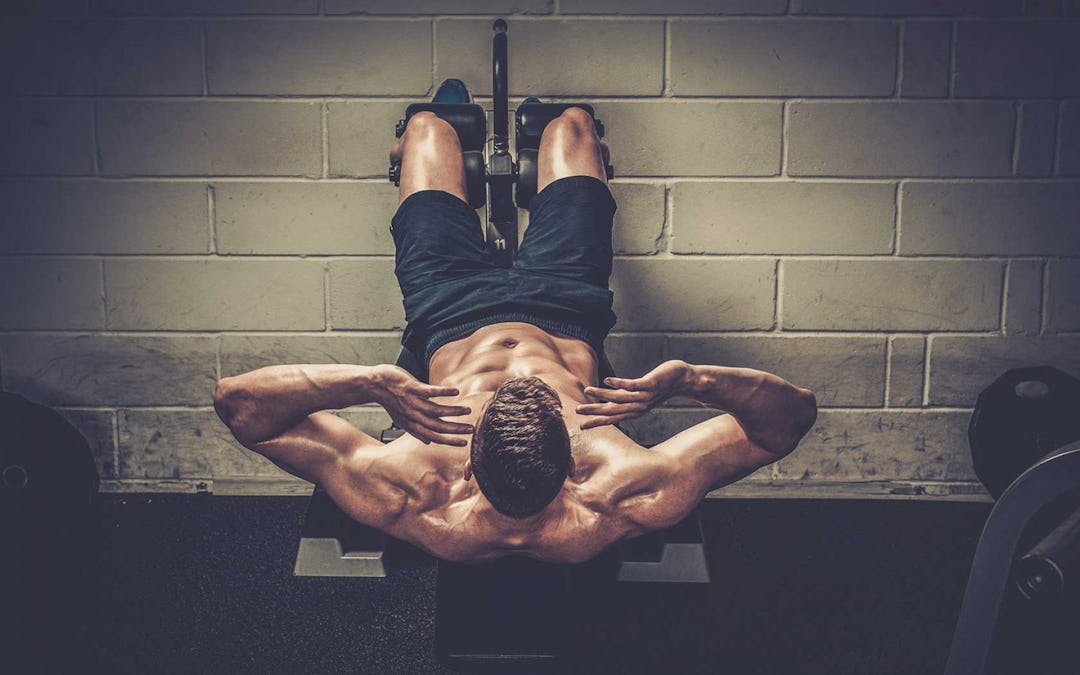
(See 00:30 in the video above.)
Bodybuilders have long believed that exercises that bring the ribs toward the pelvis (crunch variations, for example) work the upper portion of the rectus abdominis, while movements that do the reverse—lifting the pelvis toward the ribs—train the lower portion. Scientists and some trainers, however, have disputed this, arguing that, since there’s only one rectus abdominis muscle and its function is pretty simple, any movement that brings the ribs and pelvis closer together is going to work the whole muscle.
So who’s right?
A study from the Journal of Strength and Conditioning Research measured rectus abdominis activation across six different ab exercises, concluding that, while some of the moves worked the muscle more than others, none showed much of a difference in which part of the abs (upper or lower) was activated. Still, other research has shown the opposite. One trial found that the old-school curlup worked the upper portion of the muscle to a greater degree, and the posterior pelvic tilt (basically a reverse crunch, in which the tailbone is tucked under, lifting the pelvis toward the upper body) favored the lower abs—just as the bodybuilders have claimed for years.
So far, the correct answer seems to be a little from Column A and a little from Column B. In his 2021 book, Science and Development of Muscle Hypertrophy, Brad Schoenfeld, PhD, CSCS, the world’s foremost muscle-growth researcher, concludes that while the entire rectus abdominis will be worked during exercises that target it, it is also possible to emphasize recruitment of the upper abs over the lower abs, and vice versa.
He writes: “Although somewhat speculative, there is a sound rationale for performing traditional crunch variations to target the upper abdominal region and performing reverse crunch variations to develop the lower aspect of the muscle… Not only do the tendinous intersections [of the rectus abdominis] suggest some degree of functional independence of the muscle, but its upper and lower aspects are segmentally innervated by the ventral rami of the lower six or seven thoracic nerves, providing a further mechanism for selective activation.”
Schoenfeld goes on to cite pro tennis players whose abs are bigger on their non-dominant side, which he says indicates that people can, to some degree, recruit not only the upper and lower abs selectively, but also the sides of the muscle.
Long story short: you can target different areas of the abs to shape them according to your goals, but you’ll never be able to isolate any one area of the muscle completely while turning off another one.
What’s The Difference Between Situps and Crunches?
Before we go any further, we should clarify some terms. If ab training really comes down to situp and crunch-type movements, let’s define what these are.
For many years, the situp was the primary ab exercise. You lie on your back with knees bent, and raise your upper body off the floor and up to your knees. This works the entire abdominal area, but it also recruits the legs and hip flexors, and it can be hard on the lower back (as we’ll examine in the next section). In the past few decades, trainers began recommending crunches in place of the situp—a more isolated movement for the rectus abdominis that requires you only lift your head and shoulders off the floor. It’s the safer, more targeted ab workout option between the two, but crunching alone won’t get you a six pack. These days, it seems best to favor crunches over situps, but perform them with different tools—such as a cable machine, stability ball, or inclined bench—to get more muscle activation without sacrificing safety.
Is It Safe To Do Situps and Crunches?
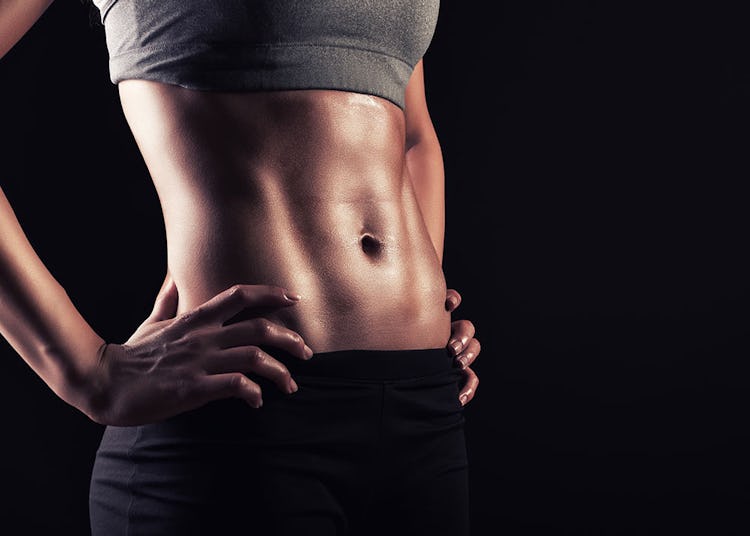
Whether you’re trying to work upper abs, lower abs, or both, the standard prescription is to perform some kind of spinal flexion exercise—i.e. situps or crunches—because bending the spine is a major function of the rectus abdominis.
In recent years, however, some athletes and trainers have contended that repeatedly bending the spine over time can lead to lower-back injury, including disc prolapse or herniation. The idea is that bending the spine pinches the intervertebral discs, gradually pushing them backward until they bulge out and press against a nerve, causing pain. While situp and crunch exercises may not cause back problems entirely on their own, they could throw gas on a fire that’s already burning in many athletes and recreational lifters. If you’ve been following a program that includes regular back squats and deadlifts, which compress the spine, and your lifestyle includes a lot of sitting and slouching (spinal flexion), you can understand how the concern arose.
For these reasons, some experts recommend developing the abs using only variations of the plank exercise, where the ribs and pelvis are held still and the rectus abdominis, along with the other core muscles, contracts isometrically. Schoenfeld agrees that well-chosen plank exercises can effectively train both the upper and lower abs, but argues that there’s nothing inherently dangerous with spinal flexion exercises either, assuming you’re not already contending with a back issue. In a review he co-authored, Schoenfeld determined that, if an individual has no pre-existing back problems, spinal flexion exercises are not only safe when done as normally prescribed, but probably necessary for maximizing development of the rectus abdominis. If you have aspirations of competing in a physique show, where your opponents will surely have well-defined abs, you’ll probably have to do some spinal flexion exercises to get the ab development needed to keep up with them.
For abs that look great and perform well, including having the ability to protect your back, healthy people should probably perform both planks and spinal flexion. Schoenfeld and spinal-flexion critics do agree, however, that too much spinal flexion isn’t good for anyone. If you’re old-school and think that 100 crunches or situps every day is the only way to see results, you could be setting yourself up for injury. Whatever the ab exercises you choose, they should be performed with moderate sets and reps like training any other muscle, with time off for recovery afterward. (We’ll give more specific recommendations below.)
Tips for Isolating Your Upper Abs
Just to recap, you can’t completely isolate your upper or lower abs, but you can emphasize one section over the other with different exercises and careful technique. To lock in on the upper abs, “You want exercises that are going to bring your ribcage down toward your hips,” says Jonny Catanzano, an IFBB pro bodybuilder and owner of Tailored Health Coaching, a fitness coaching service (@tailoredhealthcoaching on Instagram).
This means crunch/situp motions of all kinds, generally starting with your spine straight and finishing where it’s fully flexed at the lumbar. Yes, that means you’ll be rounded in your lower back, which is a major no-no for most loaded exercises such as squats and deadlifts, where the spine has to be kept neutral for safety’s sake. But to fully activate your abs, you have to take them through a full range of motion, and that means crunching your body into a tight ball. If you have lower-back pain, you may want to skip these kinds of exercises and do plank variations (we have a good one for you below), but otherwise, a few sets done two or three times a week shouldn’t present a problem.
Perform your crunch exercises for moderate sets and reps (2–4 sets of 6–15, generally speaking); don’t train them heavy. This will help to prevent placing unnecessary stress on the lower back.
To get the most out of your upper abs, “Squeeze your glutes to tilt your pelvis back, so your tailbone tucks under you when you begin a rep,” says Catanzano. Called a posterior pelvic tilt, this helps take your hip flexor muscles out of the exercise, so that your abs do the majority of the crunching.
What Exercises Work Your Upper Abs?
(See 00:52 in the video.)
A study by the American Council on Exercise showed that, out of 15 exercises tested, crunches done on a stability ball—as well as reverse crunches done on an inclined surface—both worked the upper abs the hardest, and nearly equally. (Incidentally, the reverse crunch on the incline also ranked highest for lower-ab activation.)
But don’t take these findings as gospel. Only 16 subjects participated, and two of them weren’t counted because they didn’t complete the study. Still, the results do suggest that you’d be smart to include crunches done on both a stability ball and an inclined bench in your program, provided you can do them safely.
In addition to those two moves, Catanzano recommends the following.
Kneeling Cable Crunch
(See 01:00 in the video.)
This exercise isolates the upper abs as much as possible, and the cable ensures that there’s tension on the muscles even when the spine is extended (where they would normally rest in a crunch done on the floor). The cable stack also makes it easy to increase the load as you get stronger. Use a V-grip to go heavier, or a rope handle for greater range of motion.
Step 1. Attach a V-grip or rope handle to the top pulley of a cable station, and grasp it with both hands. Kneel on the floor a foot or so in front of the cable so that you have to reach forward a bit with your hands to grasp the handle, and you feel a stretch on your abs. You may want to place a towel or mat under your knees for comfort.
Step 2. Squeeze your glutes and tuck your tailbone under so your lower back rounds a bit and you feel your abs engage. Crunch down, pulling the cable down behind your head as you bring your ribs to your pelvis. When your abs are fully contracted, that’s the end of the range of motion. Slowly return to the starting position. That’s one rep.
Don’t get carried away with the weight you’re using. It should never be so heavy that it pulls you up off the floor at the top of each rep.
Seated Pulley Crunch
(See 01:47 in the video.)
Performing a cable crunch on a lat pulldown machine may be a more comfortable option than the kneeling cable crunch, as it makes it easier to keep your hips stable.
Step 1. Attach a lat-pulldown bar to the pulley of a lat-pulldown station and sit on the seat facing away from the machine. Reach overhead and grasp the bar with hands shoulder-width apart and palms facing behind you.
Step 2. Squeeze your glutes and tuck your tailbone under so your lower back rounds a bit and you feel your abs engage. Crunch down, pulling the cable down behind your head as you bring your ribs to your pelvis. When your abs are fully contracted, that’s the end of the range of motion. Slowly return to the starting position. That’s one rep.
Hanging Leg or Knee Raise
(See 02:29 in the video.)
The pelvis flexes toward the ribs on this one, so it’s a good lower-ab move too, but it will hit the upper part of the rectus abdominis as well. Doing the movement with legs extended creates a longer lever and puts more tension on the muscles, but that will be too advanced for many people. If that’s the case for you, performing the motion with knees bent (a hanging knee raise) is a good modification. In either case, Catanzano warns that you don’t just lift your legs/knees. “That just works the hip flexors,” he says. “Make sure you bring your hips all the way up,” rounding your back as you do so.
Step 1. Hang from a pullup bar with your palms facing forward or toward each other. You may want to use lifting straps to reinforce your grip, so your hands don’t tire before your abs do.
Step 2. Tuck your tailbone under and raise your legs up, keeping your knees as straight as you can until your abs are fully contracted. Control the motion as you lower your legs back down. That’s one rep.
For the hanging knee raise, perform the same movement, but keep your knees bent 90 degrees the whole time. On either exercise, be careful not to swing your legs up or let them swing behind you at the bottom. You want your abs to do the lifting, not momentum, and swinging can strain your lower back.
Crossover Crunch
(See 03:52 in the video.)
Here’s an upper-ab exercise that also hits the obliques, the muscles on your sides that help you bend and twist.
Step 1. Lie on your back on the floor with your arms extended 90 degrees from your sides. Raise your right leg straight overhead, and then twist your hips to the left, resting your right leg on the floor. Cup the back of your head with your right hand.
Step 2. Crunch your torso off the floor and toward your right leg. Hold the top position for a second, and then return to the floor. That’s one rep. Complete your reps, and then repeat on the opposite side.
Pushup Plank with Tailbone Tucked
(See 04:45 in the video.)
If crunching movements aggravate your lower back, try plank exercises instead. Catanzano likes the classic yoga plank done a little differently—with the tailbone tucked under and knees bent to work the rectus abdominis more.
Step 1. Get into pushup position. Squeeze your glutes and tuck your tailbone under to activate your abs. Bend your knees and arms a bit so you feel like your midsection is hollowed out—abs braced, preventing your lower back from sagging.
Step 2. Hold the position for time. Aim for 30 seconds to start.
Your upper abs may get sore just from reading all this, but don’t make the mistake of thinking that training alone will produce a six pack. Exercise builds the ab muscles, but only a healthy diet can lower your body fat levels enough to reveal them, so if your belly currently hangs over your belt line, cut calories from your meals. Catanzano says that most men aren’t able to see ab definition until their body fat is in the range of 8–12%, and women need to be 14–18%.
See this guide on how to diet for abs.
How To Stretch Before Working Your Abs
Catanzano offers the following mobility drills for preparing your midsection for a session of ab training. Perform 10–12 reps for each exercise in turn, and repeat for 2–3 total sets of each.
Walking Knee Hug
Step 1. Stand tall and take a step forward, raising one knee to your chest as high as you can. As the knee rises, grab hold of your shin with both hands and pull it into your chest for a deep glute and inner-thigh stretch. Avoid slouching or bending forward as you do. Try to keep the support leg straight as well.
Step 2. Release the leg, plant your foot, and repeat on the opposite leg, walking forward with each rep.
Bird Dog
Step 1. Get on all fours with your hands under your shoulders and your knees under your hips. Tuck your tailbone so that your pelvis is perpendicular to your spine, draw your ribs down, and brace your core.
Step 2. Extend your right arm and left leg at the same time while maintaining your tight core. Don’t let your back arch. (Think about reaching forward with the arm and leg, not just raising them up.) Lower back down, and repeat on the opposite side. Each arm and leg raise is one rep.
Prone Scorpion
Step 1. Lie facedown on the floor and reach your arms out to your sides. Tuck your tailbone so that your pelvis is perpendicular to your spine, draw your ribs down, and brace your core.
Step 2. Raise your right leg up and reach it across toward your left arm. Reverse the motion and repeat on the other side. A touch on each side is one rep.
Prone Cobra
Step 1. Lie facedown on the floor with your hands on the floor at shoulder level, as in the bottom of a pushup.
Step 2. Press your hands into the floor as you extend your spine and raise your torso off the floor. Hold the top a second, and then return to the floor. That’s one rep.
Windmill Lunge
Step 1. Step forward and lower your body into a lunge. Extend your arms 90 degrees out to your sides.
Step 2. Twist your torso away from the front leg until it’s 90 degrees, with one arm reaching in front of you and the other behind. Come back to the starting position, and then repeat on the opposite leg, twisting and reaching in the other direction. Each lunge is one rep.
The Ultimate Upper-Ab Workout
Below are two sample ab workouts, courtesy of Catanzano, that you can add at the beginning or end of your current sessions, or on an off day. Alternate between the two workouts (A and B) for no more than three total ab workouts in a week. They’ll both work the entire abdominal region, but will emphasize the upper part of the rectus abdominis.
Workout A
1. Kneeling Cable Crunch
Sets: 3 Reps: 12–15
2. Hanging Leg or Knee Raise
Sets: 3 Reps: 6–12
3. Pushup Plank with Tailbone Tucked
Sets: 3 Reps: Hold 30 seconds
Workout B
Perform exercises 2A and 2B as a superset. So you’ll do one set of 2A and then one set of 2B before resting. Rest, and repeat until all sets are completed for both exercises.
1. Crossover Crunch
Sets: 3 Reps: 12–15
2A. Hanging Knee Raise
Sets: 3 Reps: 12
2B. Pushup Plank with Tailbone Tucked
Sets: 3 Reps: Hold 30 seconds
3. Seated Pulley Crunch
Sets: 3 Reps: 12–15
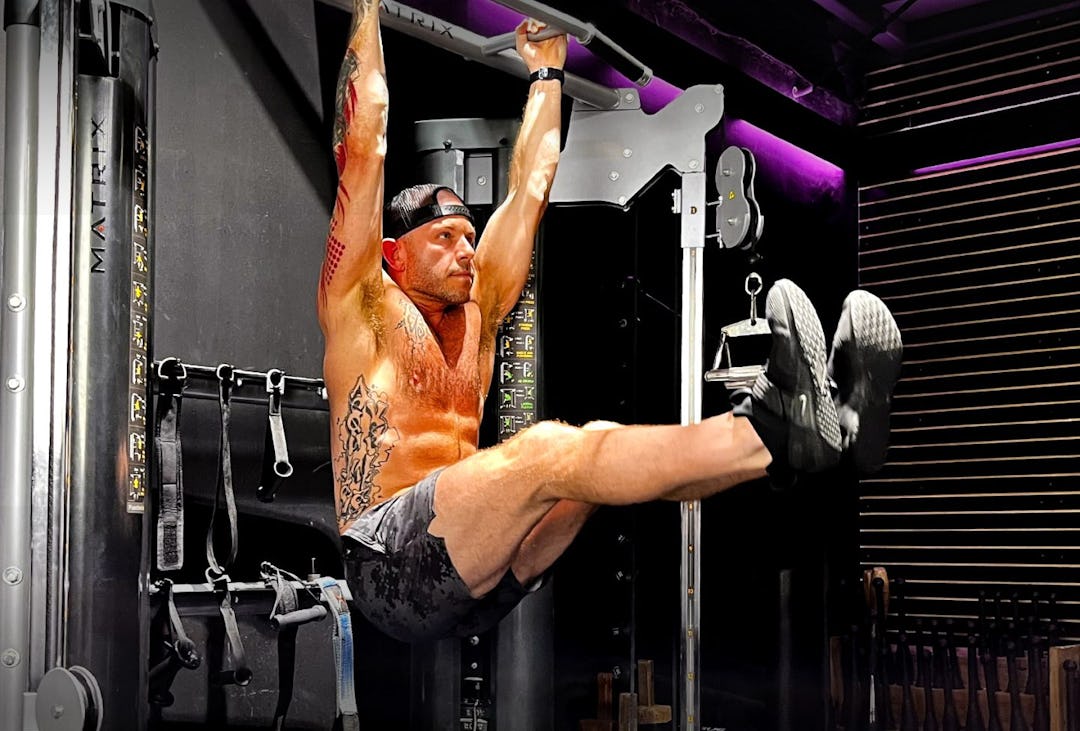
)


